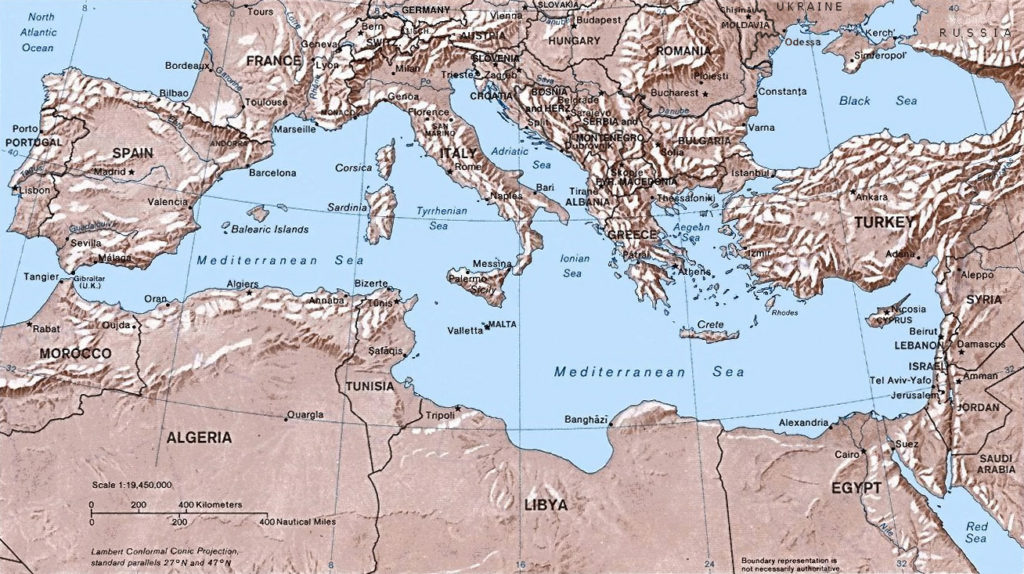
World’s Oldest Oceanic Crust Discovered
World’s Oldest Oceanic Crust Discovered
August 18, 2016
Smithsonian.com — The ocean floor is the ultimate recycling center. While the Earth’s continental crust can exist for billions of years, movement of tectonic plates causes subduction, which is when the ocean crust is shoved down into the molten mantle.
So the ocean floor rarely lasts longer than 200 million years. But a study conducted by Dr. Roi Granot of BGU’s Department of Geological and Environmental Sciences has determined that the eastern Mediterranean Sea may contain the world’s oldest oceanic crust still in place.
The crust could be almost 340 million years old, dating back to the creation of the supercontinent Pangaea.
The floor of the Mediterranean is not well studied since much of it is covered by miles-deep sediment, making exploring impossible. So instead of visiting the crust, researchers measured what they call magnetic anomalies — stripes of differing magnetic orientations recorded in the crust — to examine the sea floor.
These magnetic stripes are created as the ocean crust forms along mid ocean ridges. As the magma cools, magnetic particles in the solidifying rock orient themselves with Earth’s magnetic field.
“Changes in the magnetic field’s orientation over time are recorded in the ocean floors, creating a unique barcode that provides a time stamp for crust formation,” says Dr. Granot.
To conduct the study, Dr. Granot and his team towed magnetic sensors to map 4,300 miles of the sea floor around the Herodotus and Levant Basins in the eastern Mediterranean between Turkey and Egypt. It took four research cruises between 2012 and 2014 to cover such a large area.
“I was shocked,” Granot says, regarding the findings. “We don’t have intact oceanic crust that old. It would mean that this ocean was formed while Pangaea, the last supercontinent, was still in the making.”
The study suggests that the crust might be a remnant of the ancient Tethys Ocean, which existed long before the Atlantic and Indian Oceans.
“With this new geophysical data, we could make a big step forward in our geological understanding of the area,” says Dr. Granot.




